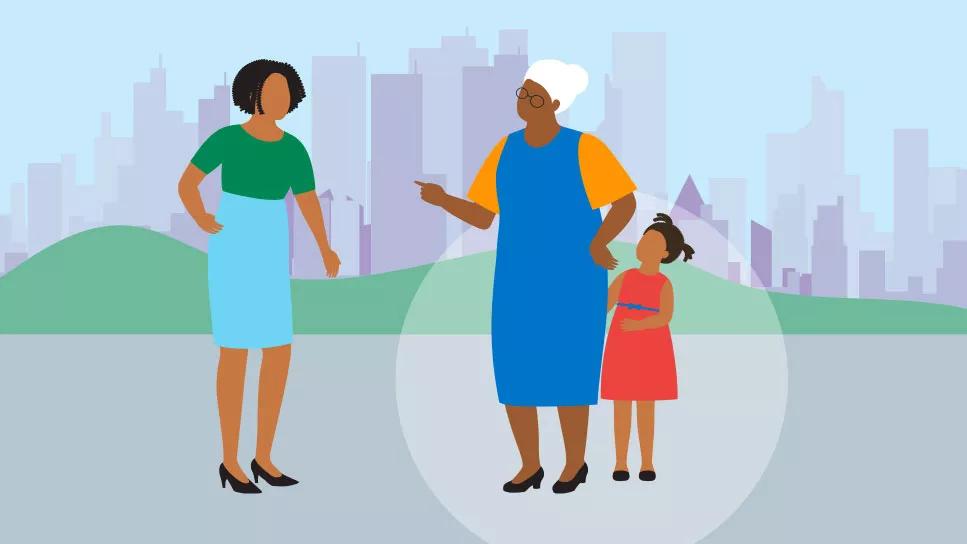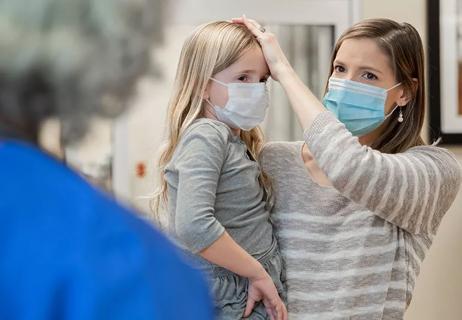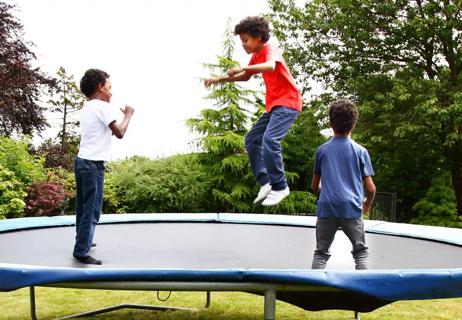It’s never too early to teach your kids who strangers are and how to avoid unsafe situations

You want your child to be safe, but not anxious. Aware of their surroundings, but not living in fear. Confident that they can go out and face the world, but not be reckless.
Advertisement
Cleveland Clinic is a non-profit academic medical center. Advertising on our site helps support our mission. We do not endorse non-Cleveland Clinic products or services. Policy
It’s a fine line that parents and caregivers walk.
You know all too well that the world can be a scary place. You’ve read the news and listened to one too many true-crime podcasts not to have gotten that message. And you know your top job is to keep your kiddos safe.
But how? How can you raise a child who is both secure in their place in the world and aware that it's also home to bad people who should be avoided?
How can you teach your kids about stranger danger without traumatizing them?
“Start early and talk often,” advises pediatrician Richard So, MD. “Unfortunately, kidnapping can happen whether we’re talking about a toddler wandering away for a split second or a teenager driving a car. So, it’s important for caregivers to continue to share the message that kids and teens should stay away from people who could harm them.”
How do you get started? Dr. So offers advice.
Stranger awareness, or ‘stranger danger,’ is an age-appropriate warning to kids to be cautious around people they don’t know. It’s a reminder to kids not to interact with people who aren’t familiar to them.
Stranger awareness is a matter of teaching kids rules to keep them safe from unfamiliar adults, like:
Advertisement
As adults, we know that the world isn’t all sunshine and rainbows. But little kids might not.
Developmentally, toddlers and preschoolers often don’t have the experience to recognize that the adults they encounter aren’t always good people.
The world is an easier place in children’s eyes. Naivety is part of childhood. But it can also leave kids vulnerable to people with bad intentions. So, incorporating lessons on stranger danger is important for your child’s development and safety — just like learning to look both ways when crossing the street or wearing a bike helmet.
“As soon as your kids begin school, and even before, start talking about stranger danger,” Dr. So suggests. “Remind them to keep close to you in the store because you are their trusted adult.”
Explain to young kids that adults they don’t know shouldn’t ask for help from children. Safe adults don’t need kids to help them find their lost dog. Safe adults don’t need children to give them directions. Safe adults who need help ask other adults — they don’t approach kids.
Make sure your kids know that a stranger is anybody who is unfamiliar to them — even people who seem friendly. After all, not everyone who has bad intentions looks like a Disney villain or gives off “bad guy” vibes.
And expect that it can be tough for some kids to come to terms with the difference between “stranger” and “not a stranger.” For example:
“That guy’s not a stranger, I saw him walking his dog by the house yesterday.” Or “That lady in the park isn’t a stranger, she told me her name.”
Or the opposite happens.
That aunt you only see on special occasions is now a stranger in their eyes. Or that friend who you ran into at the coffee shop for the first time in years? Stranger.
So, they clam up. They glue themselves to your leg. They’re on stranger awareness high alert.
That’s OK and developmentally appropriate.
“This is the child’s natural defense mechanism,” Dr. So shares. “Tell those outer-circle adults that the child is learning stranger danger. Tell your child if you say someone is safe, then they talk to them or give them a hug, if they want to. But remind them, too, that also they don’t have to talk to people or hug people who make them feel uncomfortable.”
Fine-tuning the definition of a stranger can take some time. So, keep the conversation going. They’ll get there.
Dr. So says different families use different methods for teaching lessons in stranger awareness.
“Kids like certainty and predictability,” Dr. So emphasizes. “Reiterating what to do around strangers helps take the uncertainty out of a risky situation should one occur.”
Advertisement
You can try:
What you say and the way you teach your kids about stranger danger is up to you and based on your child’s maturity and personality.
If your child is naturally more cautious, talk about strangers, but don’t harp too hard. Notice if they become anxious, and back off when you need to.
Got a social butterfly who introduces themselves to everyone they meet? Keep the lessons flowing.
Honesty is the best policy when it comes to talking about stranger danger. It’s important for kids to know that bad things can happen and that they need to watch out for unsafe situations.
Advertisement
That doesn’t mean you have to sit down and watch 48 Hours with your first-grader. Or that your pre-teen needs a city-wide tour of the local kidnapping hotspots.
But don’t withhold information or worry too much about scaring your kids.
“Kids are a lot stronger than we give them credit for,” says Dr. So. “Talk to them as one person to another. Tell them they need to be responsible for protecting themselves.”
Consider these age-appropriate stranger danger warnings:
Advertisement
Even with year after year of reminders, bad things still happen to good people. And we know that abductions aren’t always at the hands of strangers. Kids should be taught that even people they know can pose risks, too.
Remember that staying safe from strangers is a lesson your child will continue to develop throughout their life. Balance the fact that the world isn’t always safe and fair with the reality that not everyone has bad intentions. Meet them where they’re at, but don’t shy away from the conversation. Their safety and well-being are too important.
Learn more about our editorial process.
Advertisement

Sexting has become all too common among kids, putting them at risk for bullying, blackmailing and human trafficking

Talk with your kids about online risks, and consider monitoring their activity

Many cosmetic products can cause poisoning and chemical burns

Install cabinet locks, outlet covers and safety gates to keep your child safe

Specific symptoms will warrant a trip to the emergency room

How to avoid high chair accidents

Consider other outdoor activities

Jaundice that’s present at birth or lasts more than a week should be evaluated by a pediatrician

If you’re feeling short of breath, sleep can be tough — propping yourself up or sleeping on your side may help

If you fear the unknown or find yourself needing reassurance often, you may identify with this attachment style

If you’re looking to boost your gut health, it’s better to get fiber from whole foods